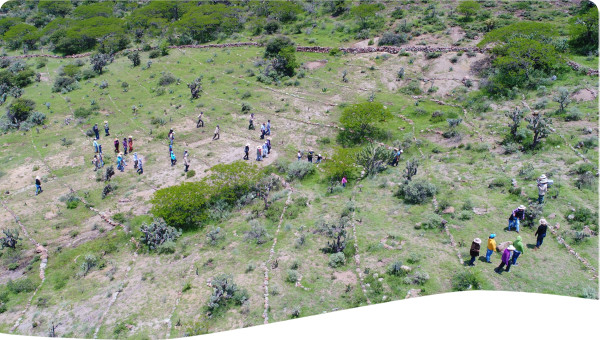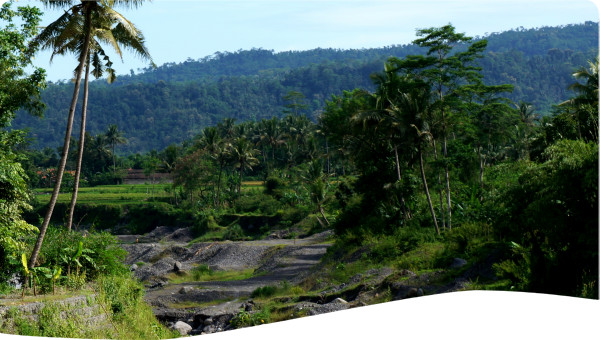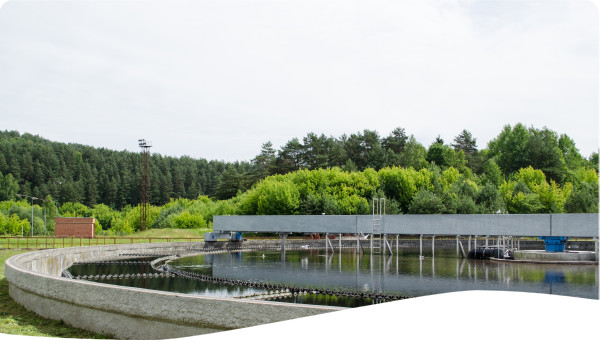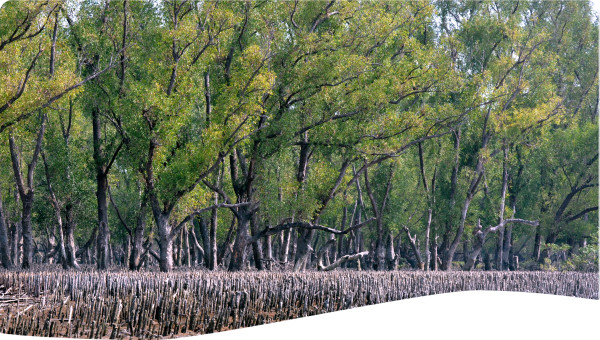Rural and peri-urban areas are often neglected when making infrastructure investments. However, these areas could gain from treatment of domestic wastewater through the construction of wetlands. In Bulgaria, the problem of wastewater treatment was addressed through the construction of a wetland for treating wastewater from domestic sources. The lesson learnt is the importance of community initiatives.
Rural and peri-urban areas are at the bottom of the interest regarding the infrastructure investments. The government favours large investments targeting urbanized centers. Also, there is a little interest of water sector companies due to high investments with a low future return of the investment.
Constructed wetlands are sustainable and cost-effective wastewater treatment systems that have a number of advantages compared to conventional technical systems: they maintain a high performance, use less energy, sequester carbon, require less operation and maintenance and are better able to cope with the impacts of climate change.
Small communities are not aware of technologies that are alternative to traditional wastewater treatment methods. The treatment of wastewater as a medium to address sanitation, public health, and environmental protection as a medium of promoting safe drinking water might suit to peri-urban and rural communities. This requires capacity building and awareness raising among mayors, local community-based organizations but also governmental decision makers and ministries.
A project conducted in peri-urban areas in Bulgaria aimed to advocate for the construction of wetlands. Background information on what constructed wetland entails and the type of wastewater that can be treated in a constructed wetland was provided.
Constructed wetland was identified to be useful in the treatment of different types of wastewater streams such as domestic wastewater, grey water, urban wastewater and industrial waste water.
This case study provides information about the principles and guidance for the design of subsurface flow constructed wetlands as a sustainable wastewater treatment option, especially for small communities in Bulgaria, based on German national guidelines.
The Home of Handicapped People in Vidrare, part of the municipality in Pravets, Bulgaria, wanted to build a treatment plant for the domestic wastewater produced by the centre (from the kitchen, toilets and laundry) in order to improve the existing situation. It is the first ever constructed wetland in Bulgaria.
The project was launched in 2008 by the municipality of Pravets, WECF (NGO) and ECOWorld 2007 of Bulgaria. Funding for the project was obtained from the German Federal Environmental Foundation (DBU). The stakeholders in Vidrare and Pravets were informed about constructed wetlands as a suitable low-tech option for improved wastewater treatment. The decision was made to build a constructed wetland for wastewater treatment in the yard of the Home; designed to be attractive in appearance. The municipality agreed to permit the installation of the first constructed wetland in Bulgaria, hoping that it would also serve as a demonstration plant that could be replicated by other municipalities.
The planning and design was done by Otterwasser (Lubeck/Germany) and ECO project (Bulgaria). Investment cost of the project was estimated to amount to 45.000 EUR. The director of the Home agreed that there should be an appointed staff member responsible for the maintenance of the constructed wetland. This staff member was instructed by Otterwasser.
Construction commenced in October 2010 and was completed by April 2011. The wastewater treatment plant consists of a settling tank for the pre-treatment and the planted soilfilter for the biological step. The operation and maintenance costs are highly dependent on the local cost of energy and staff. The required time and energy supply are listed here:
- Time needed for operation and maintenance: 1.5 h/week (80 h/yr)
- Energy supply for the pumps: 2 kWh/d (750 kWh/yr)
- Sludge disposal from the pre-treatment step: 36 m³/yr
The most time-consuming activity was obtaining the necessary permits for construction and operation of the constructed wetland. Familiarising the Bulgarian authorities with this new technology also proved time-consuming. Developers should also be aware that unforeseen problems are likely to arise during construction. This project, for example, experienced difficulties in construction due to the presence many underground cables and pipes in the yard of the Home, which had not been mentioned in previous documentation. The construction company first had to determine the location of these pipes and wires, and then modify their plans to avoid damaging them. This was a time-consuming challenge. It is often useful to use materials that are available in the region, such as the coarse sand and gravel. In some regions, pre-fabricated shafts made of reinforced concrete for the pre-treatment step are available. A cost comparison is recommended to check if the pre-fabricated parts are cheaper than constructing the shaft with reinforced concrete on-site. Plastic tanks can also be used. In the case of Vidrare, the construction on-site with reinforced concrete was the cheapest option. During construction, it was necessary to visit the site regularly, ideally daily, to check on the progress and quality of the construction. Crucial installations, e.g. the welding of the liner at the outlet of the filter, need to be inspected. Although the technology of the constructed wetland is relatively simple, a number of operational and maintenance tasks are needed to ensure the proper performance of the plant. It was emphasized that the maintenance of the wetland has to be done on a yearly basis. The involvement of local community was made from the beginning of the project and was a pre-condition of the successful implementation.
Constructed wetland was identified to be a suitable low-cost technology option for improved wastewater treatment that would serve as a demonstration plant and could be replicated by other municipalities in Bulgaria.
A number of operational and maintenance tasks are required in order to ensure the proper performance of the plant.
 Case studies
Case studies



